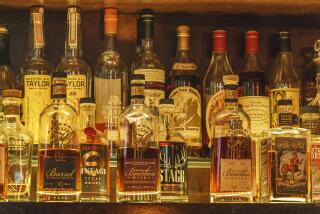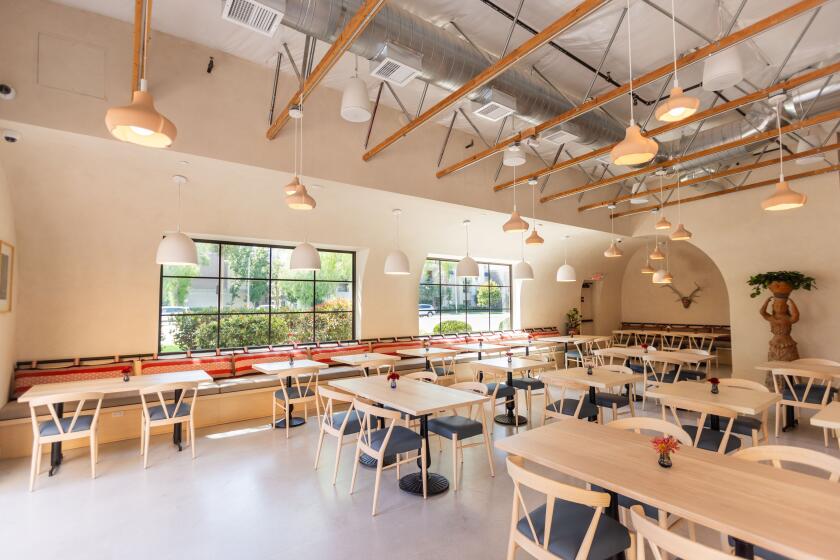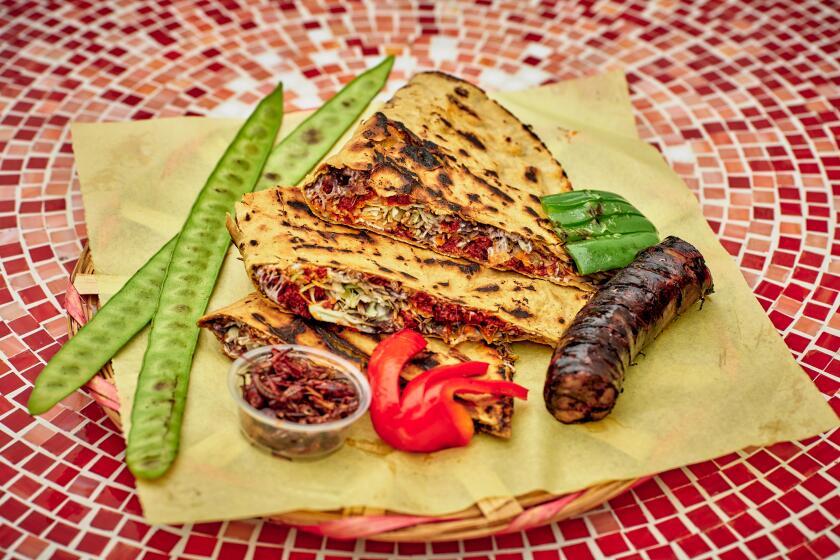Surprise! Good Wine at Low Prices
Most people assume the price of a wine indicates its quality: A $20 wine is better than a $5 wine. Usually, it is; but is it necessarily four times as good? Or is price determined by factors other than quality?
Sometimes quantity is the main issue: When only a tiny bit has been made, rarity may be the reason for a wine’s high price. Sometimes price is merely a matter of image: People who don’t know what great wine is can be reassured by paying a lot for it. This is a shame.
Consider two recent releases: the 1978 Private Reserve Cabernet Sauvignon from E. & J. Gallo Co. and the 1986 Cabernet Sauvignon from Christian Bros. Gallo has rarely had a wine that sold for as much as $10, but the suggested retail price on this is $15 a bottle. The Christian Bros. Cabernet, on the other hand, has a suggested retail price of $6, but industry sources tell me the wine will be found for a lot less at your local discounter.
Now if you should see a wine selling for $10 or $12, you might assume it was worth three times the price of the Christian Bros. Cabernet. You’d probably be wrong. I’ve tasted the wine and I find it as good as any wine in the $10 to $12 price bracket. Although the Gallo Reserve is good, and offers a chance to see what a 13-year-old red wine from California is likely to taste like, it is no better than the Christian Bros. wine (age differences aside).
One reason for this price difference is rarity: There are only 1,000 cases of the Gallo wine and more than 22,000 cases of the Christian Bros. But there is a far more intriguing reason for the latter wine’s low price.
When the 1986 harvest was under way, Christian Bros. was still owned by the Catholic teaching order that had owned the winery for decades. Wine maker Tom Eddy was in the third year of a major upgrade in quality at the Napa Valley winery, and he had a great fondness for both the 1986 vintage and for this particular wine. The wine was aged in French oak barrels and made to sell for about $11 or $12 a bottle, which would have made it a good value.
In the summer of 1989, Christian Bros. was sold to Heublein, subsidiary of a huge British conglomerate. Heublein, which already owned Beaulieu and Inglenook, certainly didn’t need another Napa Valley winery. Indeed, insiders admitted at the time that the only reason Heublein wanted Christian Bros. was for its successful brandy operation, which then represented about 80% of the company’s revenues and was contending with (ironically) Gallo for No. 1 in U.S. brandy sales.
At the time of the sale, the 1986 Cabernet and a companion wine, the 1988 Chardonnay, had already been made. The Cabernet was, in fact, already bottled and labeled.
When Heublein took over Christian Bros., it looked at all its inventory and its potential in each “marketing niche” and “price point” (these are terms out of the back rooms of accountants). And, insiders say, they realized they couldn’t market the Christian Bros. wines in competition with Beaulieu, which has a stronger brand image.
They particularly couldn’t because Beaulieu already had a Cabernet and a Chardonnay priced in the $12 a bottle range. Moreover, Heublein’s Inglenook brand also had wines at those price points.
Consequently, Heublein decided to downgrade the Christian Bros. wines. They would use lower-quality grapes and no new French oak barrels.
Corporate plans can’t downgrade the quality of a wine already in the bottle. Nevertheless, the new marketing plan was implemented immediately, and the 1986 Christian Bros. Cabernet--made to be sold at $12--was released at a price likely to make people think it’s just simple splash-into-the-stew or serve-to-aunt-Martha red wine. Likewise, the very attractive 1988 Chardonnay will probably be seen as another inexpensive Pop-Premium.
Both wines are a lot better than that. The Chardonnay has wonderful balance and excellent fruit, and the Cabernet, which contains a good deal of hillside fruit, is not only a lovely wine to consume now, but should age for a number of years.
These wines, however, may be the last of the premium quality Christian Bros. wines, if insiders are correct. From these vintages on, Christian Bros. quality will truly be represented by the price.
Gallo, on the other hand, faces a curious price problem of its own. The 1978 Reserve Cabernet, with a plummy richness of fruit and soft, approachable tannins, is already giving Los Angeles merchants headaches. Some say the wine is quite nice and aging well, but that the Gallo name on a $15 wine--even a 13-year-old Cabernet--will, as one Westside merchant put it, “shock my customers.”
Interestingly, however, I blind-tasted the new Gallo Reserve against Gallo’s earlier 1978 Sonoma County Cabernet, a bottle out of my cellar that had been released in 1983, and I preferred the earlier release.
My hope is that consumers will try both Cabernets and the Chardonnay and let me know their opinions of them.
More to Read
Eat your way across L.A.
Get our weekly Tasting Notes newsletter for reviews, news and more.
You may occasionally receive promotional content from the Los Angeles Times.










